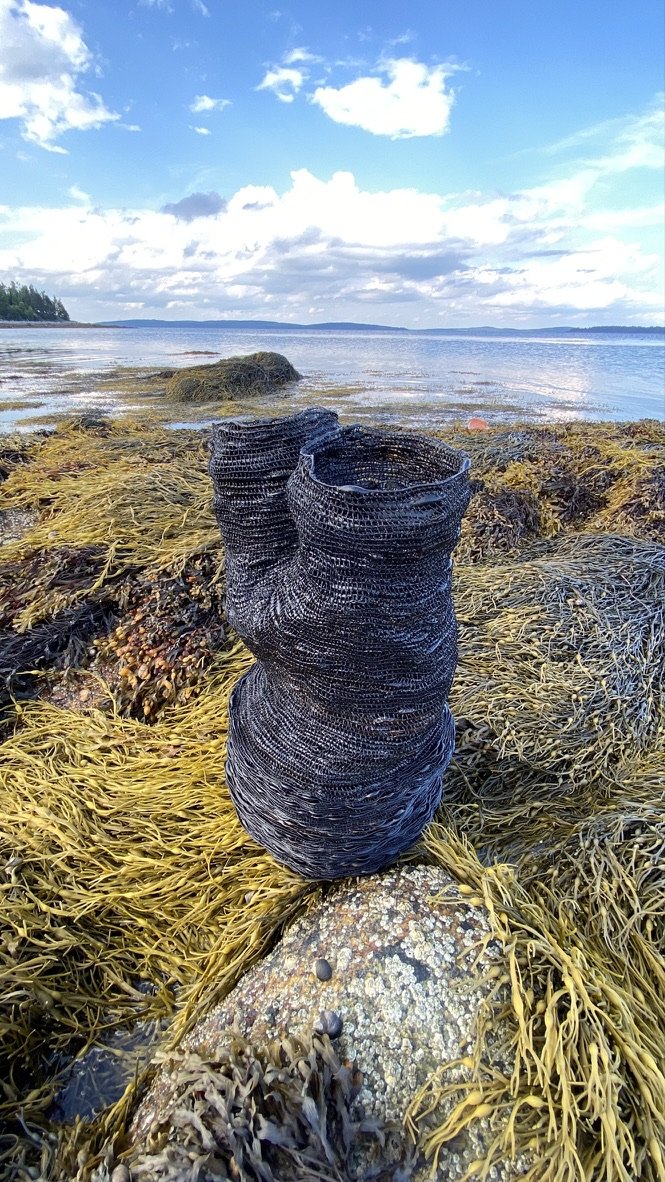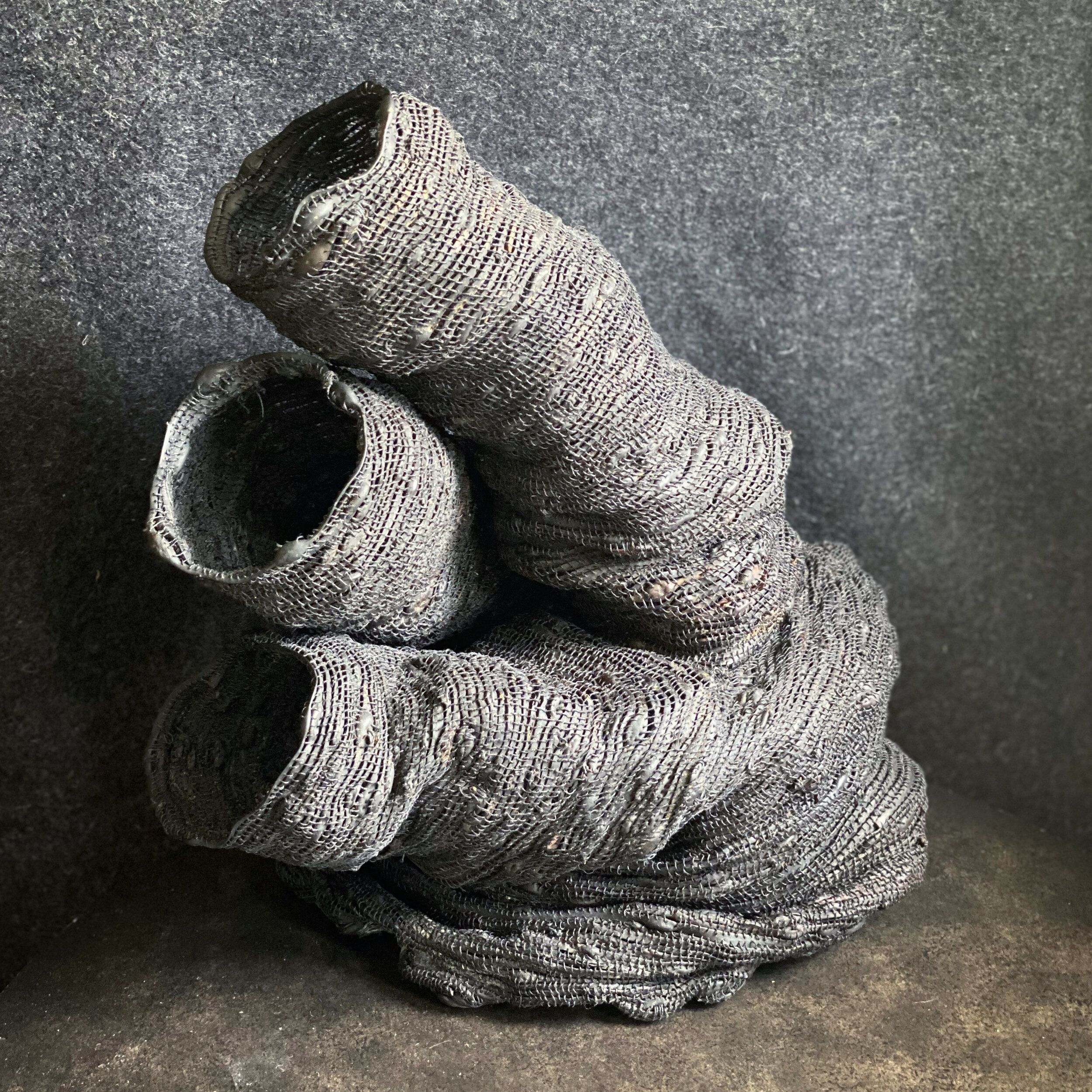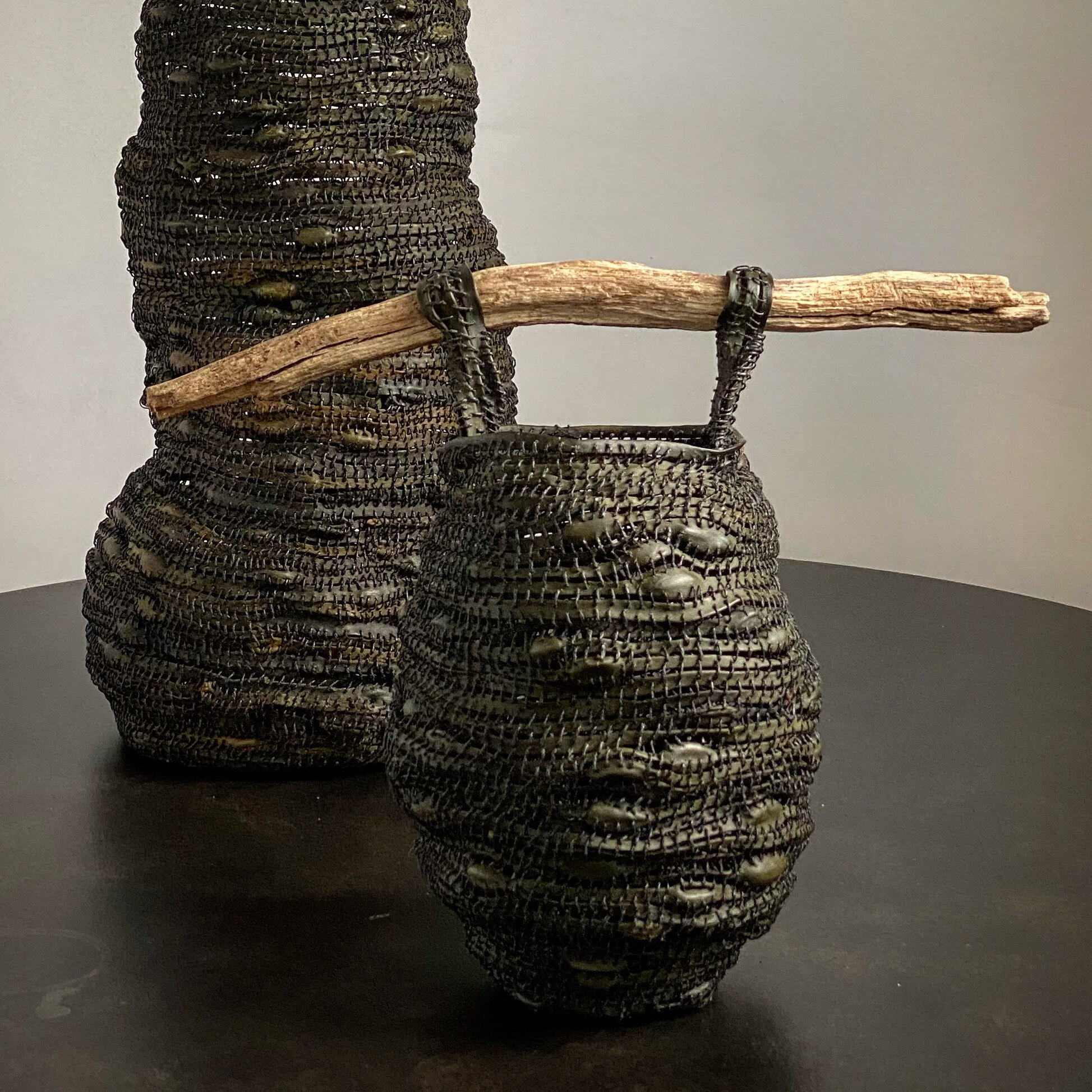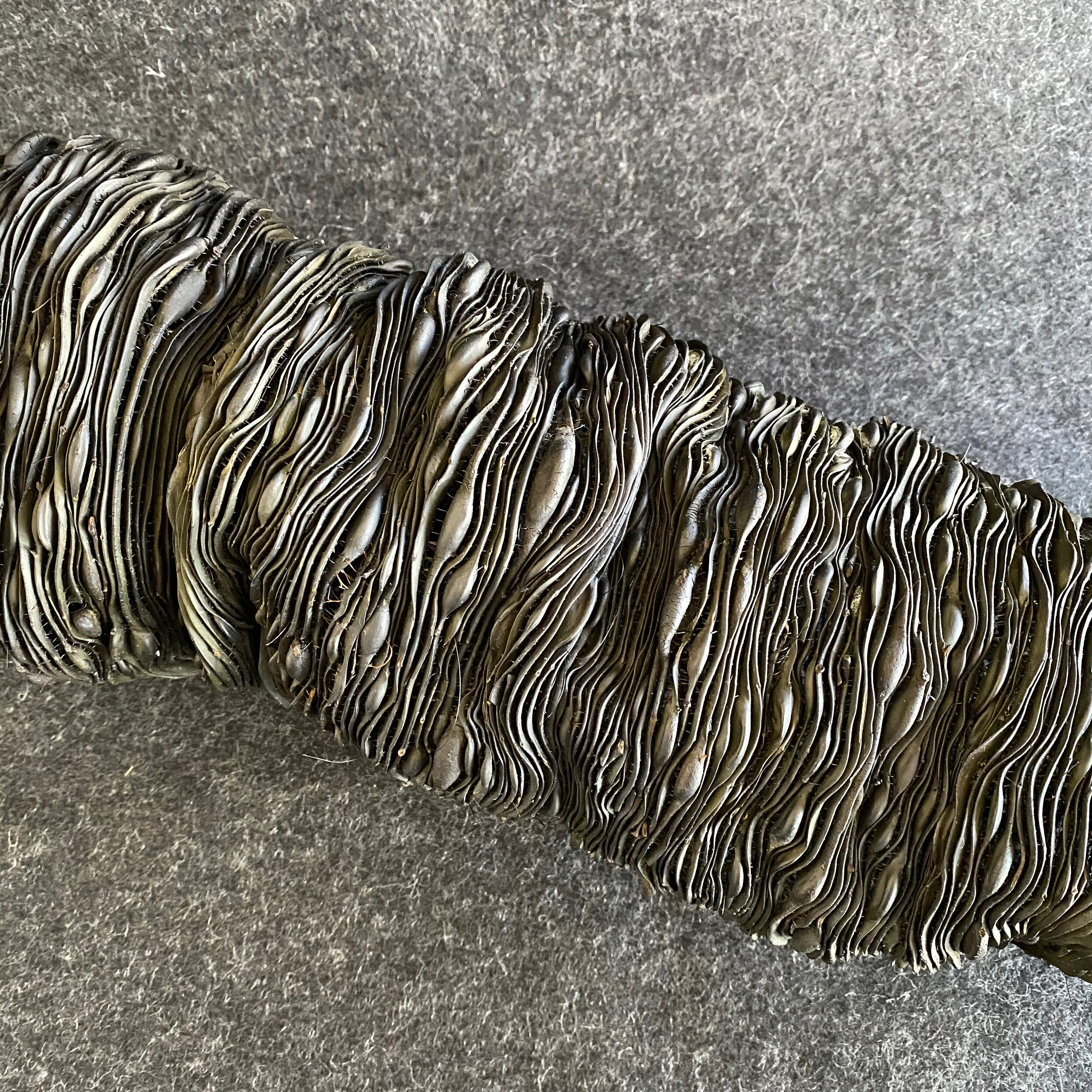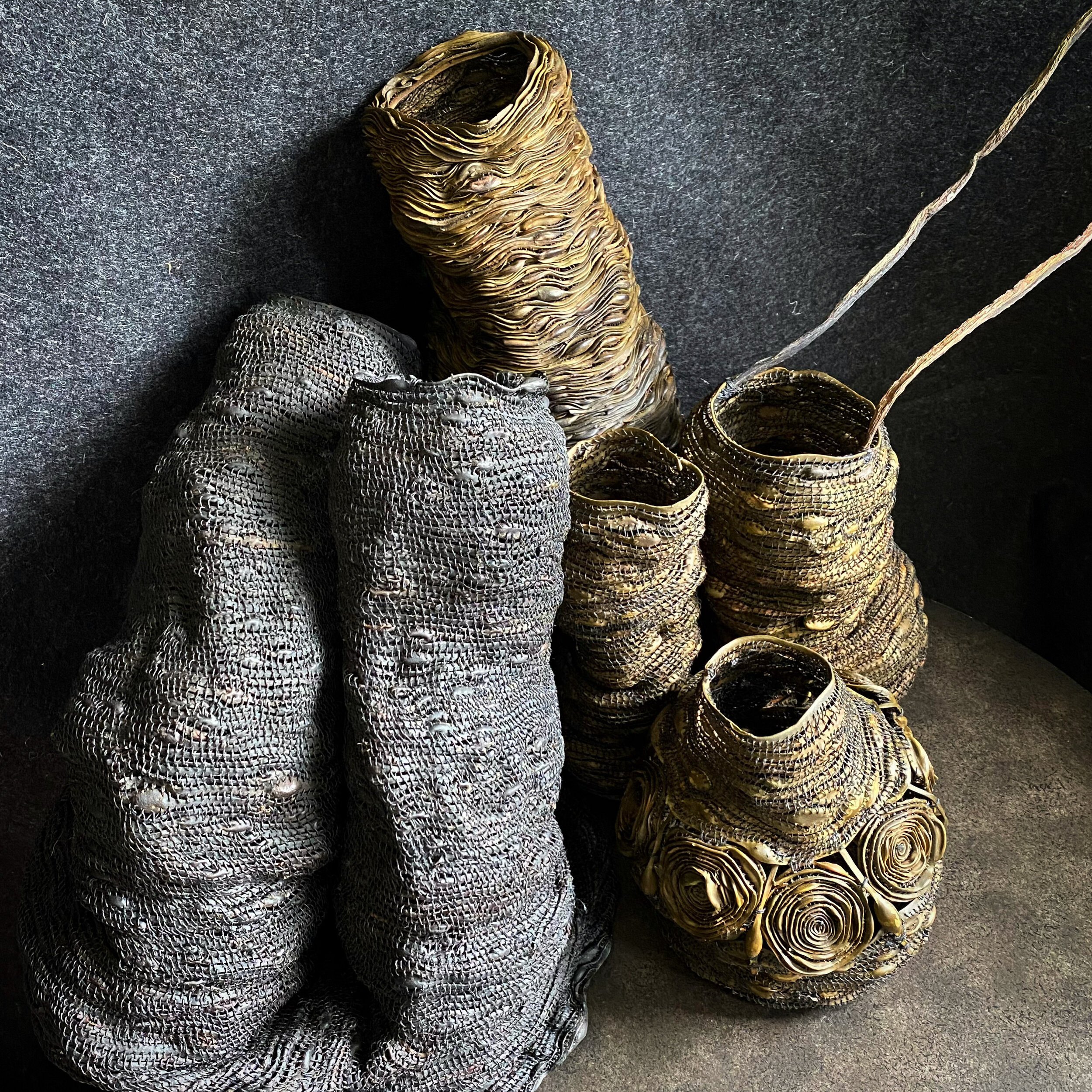
Native
(of a plant or animal) of indigenous origin or growth.
a person born in a specified place or associated with a place by birth, whether subsequently resident there or not.
Rockweed
Rockweed [Ascophyllum Nodosum] is native to both The North Sea (The Netherlands) and The Northern Atlantic (Maine). The Blue Hill Peninsula beaches are simply covered with it. This incredibly common and hardy seaweed provides a habitat for countless marine creatures, cleans the ocean, locks in carbon, and protects the beleaguered shoreline from erosion.
Rockweed vessels show the beauty of this ancient algae, while drawing attention to its environmental value.
Future Material
Rockweed, as a species, is three and a half billion years old, but my recent work lead to seaweed being added to the Future Materials Bank.
The Future Materials Bank is a meeting place of materials for artists, that proposes non-toxic, biodegradable or otherwise sustainable alternative materials. It is an initiative by the Nature Research department at the Jan van Eyck Academie in The Netherlands in collaboration with the Masters program of Materials Futures at Central St Martins in London.
To construct the work, only seaweed, linen, and wax were used. Where a finer thread was required, horsehair has been used instead.
Sustainable
Rockweed has always had a use as mulch and fertilizer, and packing material for bait and lobster. Commercially it is harvested to produce nutritional additives for pet and livestock feed and as thickeners for food, cosmetics, and some paints.
It is extremely important that Rockweed is harvested in a responsible way, so the ocean’s forest stays intact. The Rockweed Coalition’s mission is to promote conservation of intertidal marine habitat, including rockweed. Watch their short video here.

Photo by Veronique Hoegger
